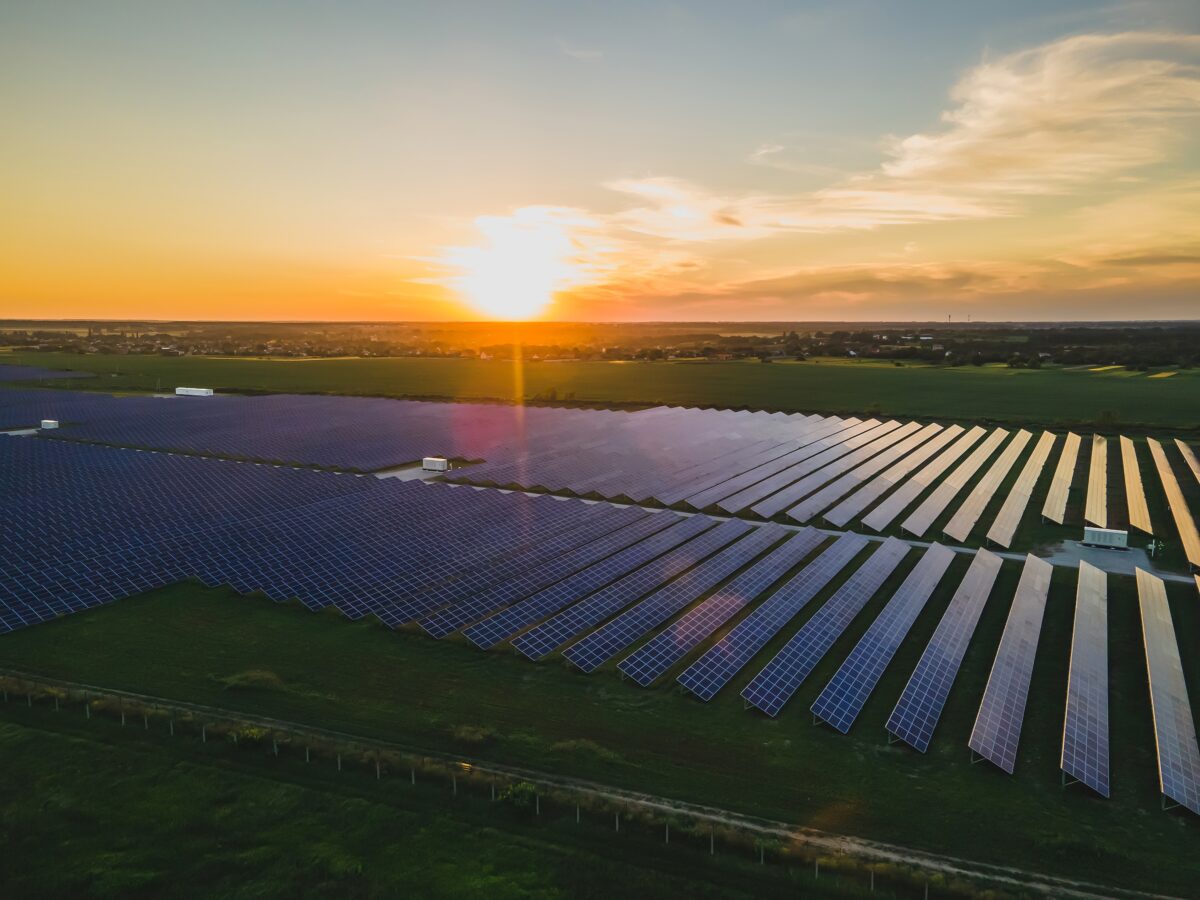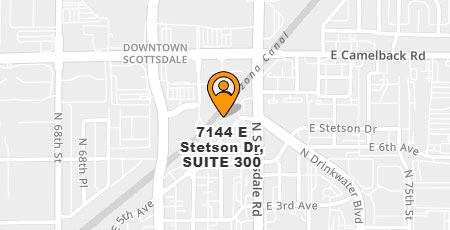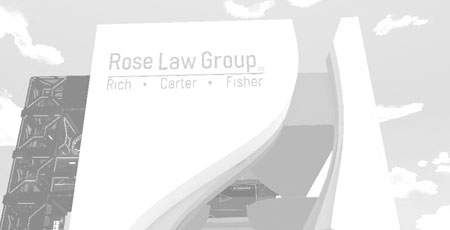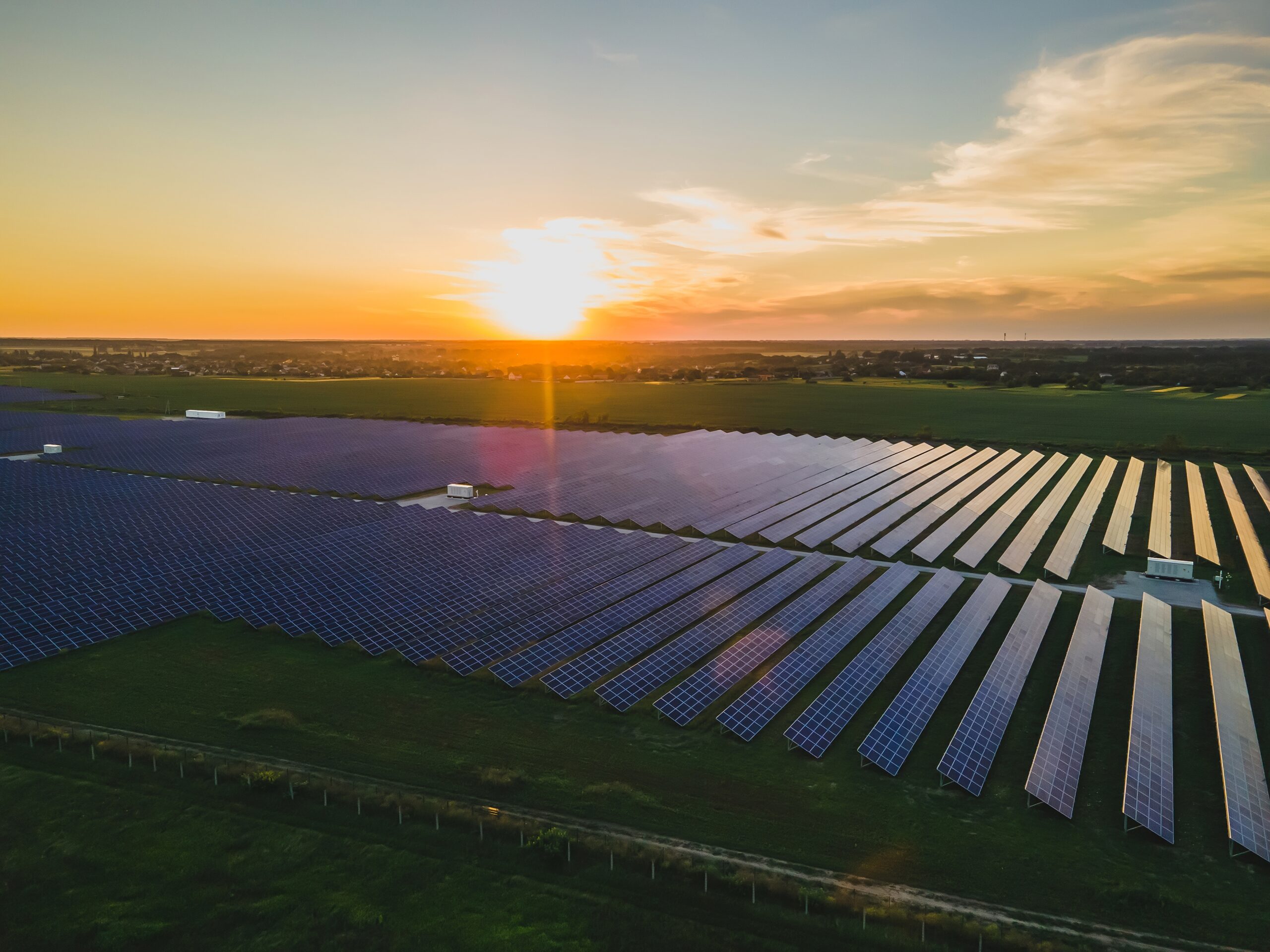
By Madelaine Braggs | Rose Law Group Reporter
Arizona could revolutionize the local agricultural sector and re-energize the state’s rural economies with an investment into large scale solar utility developments. New research shows solar panels could be a particular advantage for farmers and a sustainable solution to the state’s water management concerns. However, widespread adoption of the infrastructure is being held back by these common myths:
- Heat islands from solar panel will warm surrounding areas and negatively impact crops– FALSE
- Chemicals will leak from solar panels into the soil when it rains – FALSE
- Solar projects will use too much water – FALSE
- Grids with solar power are too unreliable – FALSE
- Solar farms will pollute the earth when no longer in operation – FALSE
Court Rich, Rose Law Group co-founder and director of utility infrastructure and renewable energy, served as moderator for the latest Pinal Partnership panel, where the state’s leading solar industry experts explained the science behind why these common-heard misconceptions are untrue and how solar infrastructure could be the missing piece in Arizona’s economic development future.
“The sun is a free resource, so solar is a money-making machine. It’s really important to dispel a lot of these myths and educate the public on what really does happen when a solar renewable energy facility goes in down the street,” Rich said.
Shaded Landscaping and Farming with Solar
The panel tackled one of the most common misconceptions surrounding solar projects: the so-called “heat island” effect, shedding light on the science behind this phenomenon and impact on local temperatures.
Dr. Greg Barron-Gafford, is a researcher from the University of Arizona Biosphere 2 Agrivoltaics program, comprised of ecologists, engineers, and social scientists with a mission to understand the effects of renewable energy transitions in rural America and worldwide. Driven by a commitment to educate and inform the community, the Arizona group conducts experiments to answer critical questions.
“One of the persistent myths surrounding solar projects is the notion that they create ‘heat islands’ within their vicinity.” Dr. Barron-Gafford explained how his team tackled this misconception head-on. They conducted a series of experiments to measure temperature and wind speed inside and outside solar arrays to determine if they indeed generated excessive heat. The results were clear: there is a localized “heat island” effect within the solar array itself, but this effect dissipates quickly beyond the array’s boundary.
The impact is so minimal, he says it’s something that can be easily solved by “something as simple as putting two-feet tall shrubs around the perimeter of the panels.”
Dr. Barron-Gafford emphasized that this localized heating is not due to the materials of the solar panels or any sinister energy redirection. Instead, it’s a natural result of the shading effect created by the panels themselves. The key factor is the lack of vegetation beneath the solar panels, as plants naturally help cool their surroundings through photosynthesis and water loss. In regions where vegetation thrives underneath solar panels, there is no “heat island” effect.
In some cases, farms have been able to directly benefit from the shading of the solar panels themselves to help protect plants and crops from too much direct sunlight, which also help keep the soil cool enough to reduce the evaporation of groundwater. So instead of harming their crops, farms could actually grow more crops underneath the shading of the solar panels.
Dr. Barron-Gafford emphasized the need for more accurate reporting of his research which has been misconstrued, noting that “the science goes beyond sensational headlines.” Especially when it comes to the idea that the panels will leak toxins into the ground when it rains.
“We would not be wanting to grow and distribute food that we would be eating ourselves,” he said while explaining that he and his researchers grow and eat crops harvested from under solar panels. The research program’s solar farm site in Colorado is producing somewhere in the neighborhood of 8,000 pounds of produce every growing season and the surplus is going to the local food bank.
“We’ve been measuring samples of the soil from these plants, through time. So far, we have not ever measured a high level of any kind of heavy metal in the soils or in the plants. Farmers who are worried that heavy metal are going to seep into the soil should know that in terms of hydrology, that doesn’t happen. But also, just in terms of chemicals coming out of the panels, they wouldn’t make panels that would last 40 years, that would fall apart. They wouldn’t be allowed to be here and we can confirm that those nothing that’s inside the solar panel makes it into the soil. It certainly isn’t making it into the crops in any way that we’ve ever measured anywhere.”
Matt Kowalsky, Manager of Business Development at Pattern Energy Group, reminds consumers, “It’s in our economic interest as the developer owner and operator of projects to be running our panels at the highest level of efficiency and if there is some sort of crack in a panel, some sort of water intrusion into the panel, that means that panel is running ineffectively. It’s on us to go in and repair that panel and so we’re constantly monitoring the panels, going in and repairing panels that do have cracks, so any sort of leeching that would happen would have a negative impact on our economics and it’s in our best interest to stay on top of that.”
The Tax Benefits
Erik Ellis, Vice president of solar power company Bright Night, says it’s vital to them to bolster the economy of the communities their projects are located in. “Undertaking an economic impact analysis early in the project development process is crucial.”
Using a real-world example in Pinal County, where their Box Canyon solar park project is set to generate over $20 million in local tax benefits, Ellis pointed out that these projects are often tax-reducing for residents. He says, “This is achieved through meticulous citing and responsible community engagement.”
Located on state land, this project is set to contribute over $60 million to the Arizona State Land Trust. The beneficiaries include the K12 educational trust, local prisons, hospitals, and the school system, amounting to an $80 million contribution in the public interest.
Beyond direct tax benefits, renewable projects create job opportunities. During the 15-month construction phase, approximately 300 jobs are generated. Once operational, these projects employ full-time staff, further enhancing the local workforce and economy. The added revenue allows local governments to provide more services or reduce taxes, both of which significantly benefit residents.
Ellis says renewable energy projects are also helpful in maintaining energy price stability. “With rates fixed for 20 to 40 years, these initiatives offer a reliable solution to the fluctuating energy costs that often plague traditional sources.”
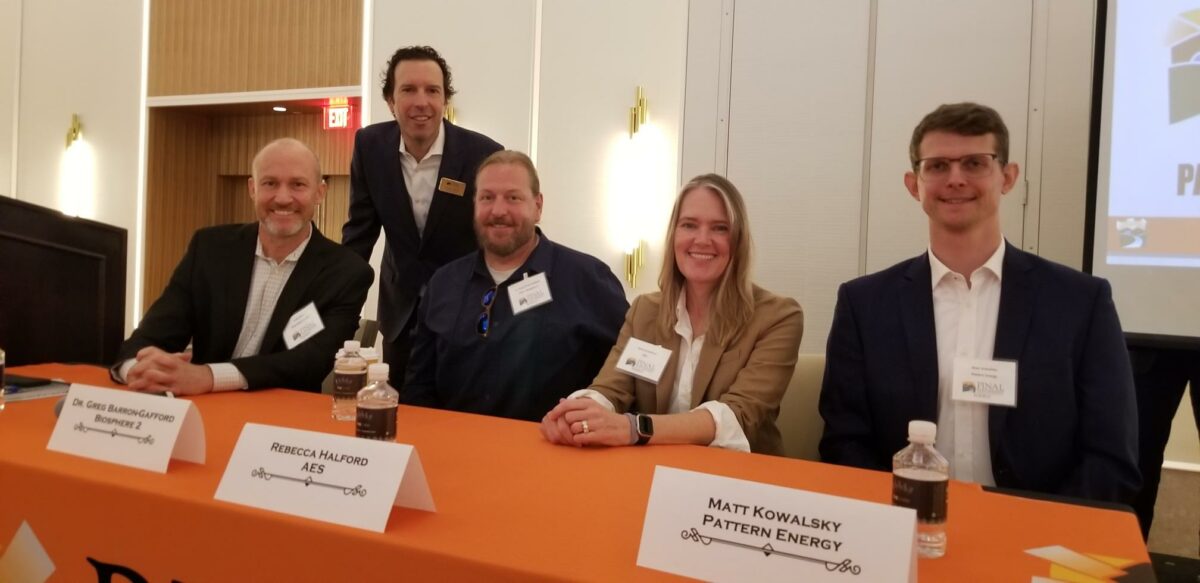
Solar Solutions Reduce Water Use
Myths surrounding renewable energy projects’ water use makes Rich feel like it’s Opposite Day. “Water conservation is often an overlooked environmental benefit of solar projects.”
Kowalsky says Pattern Energy’s Cielo solar project is a perfect example on how solar could mitigate Arizona’s water resource challenges. The tenant farmer revealed that approximately 3,000 acre-feet of water were used for crops on the land last year. In stark contrast, the solar facility would require a mere two acre-feet per year for operations.
Ellis says Bright Night has some pretty eye-opening numbers. He explained that when solar panels are washed, which isn’t always necessary, they use about 22 ounces of water per panel. This translates to roughly 100,500 to 150,000 gallons of water consumed in a typical project. Conventional thermoelectric generation consumes a substantial amount of water for cooling. In Arizona, for example, it amounts to about a third of a gallon for every kilowatt-hour of energy consumed.
When you consider the difference in water use from cooling your home, Ellis says solar seems even more obvious. “When you run your air conditioning, many gallons of water is that AC unit consuming by virtue of the fact that there’s power plant somewhere else that’s using water to cool the engine?” According to Ellis’ math, a 2,500 sq. ft. home likely has two 4 ton air conditioning units. You take 13 kilowatts as the power consumption of your air conditioning unit and you multiply that times a third of a gallon, and your AC unit is consuming four gallons an hour every time it runs for an hour, if you’re powering it from a conventional plant four gallons an hour. If you have two of these units, that’s eight gallons an hour that your AC unit is consuming if it’s running off of a conventional plant.
192 gallons if you run your AC all day. But if that plant is being powered by a solar plant, it’s using almost no water.
Ellis says “We can actually conserve our resources if we develop these projects well and then you can add battery storage and that same battery storage system does not consume any water either. You generate the power, no water consumption, you store it and then you can power the grid from 8:00 a.m. until 10: p.m. at night right now from these resources, consuming virtually no water. So that becomes very strategic for our state um to develop these resources if we’re concerned about water use.”
Reliable in Our Lifetime, and Long After
Every Arizonan has experienced a monsoon power outage at some point in their residency. Whether the wind was enough to barely move the patio cushions, or snap the front yard’s Palo Verde in half, one thing you can rely on is the current power grid cutting out with a strong storm. Rebecca Halford, with the Business Development team at AES, says solar battery storage is the answer to power stability.
“This is where battery storage technology is coming into play, to provide some reliability and renewable energy usage for the grid during peak hours.” Last week, SRP came out with their 2035 Integrated Systems plan to increase the amount of renewables in their portfolio and a similar amount of increase to battery storage. Halford says, “A key component of their study was to ensure that in 2035 there is grid stability. Seeing this particular resource, solar storage, being greatly increased in SRP’s plan highlights the point. We can build a more reliable grid by greatly increasing renewables.”
A common question people have about solar projects is, “What happens when the solar panels are no longer in operation?” In the spirit of being eco-friendly, solar project developments are recyclable, both their equipment materials and the land. As we covered above, there’s no toxins seeping into the soil from the panels, so redeveloping the land is easy and flexible.
Halford says, “One of the benefits that I always like to tout is that this use doesn’t have to be here forever. At the end of life, you can take it out and if the world has grown in a different direction, or if the community needs something else in that location, you can come back and build a housing community, a manufacturing plan, it’s prime open space.”
She’s heard skeptics say, “These panels will just sit there forever, or the land will be a toxic waste dump when they’re done and who wants to develop over that?” But this is all untrue. In fact, AES is working with different organizations to create panel recycling programs even before plants close operations. “We’re making a plan for the future with recycling processes. The materials in these panels are useful and can be reused, especially the copper.”
When the facts are laid out, it seems the path to a sustainable future is clear. A shift into solar utility infrastructure could create an economic engine for rural Arizona and a resource management strategy that could secure the state’s growth for lifetimes to come.

